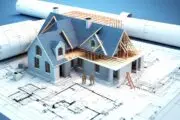Energy efficient features—and the cost-saving benefits—are expected by today’s new-home buyers. From Energy Star certified appliances to low-E windows, new construction homes are equipped with products and materials that ensure home buyers do not have worry about wasted energy or high utility bills.

To gather top tips on ensuring energy efficiency and educating future homeowners, BUILDER tapped home builders who boast years of Energy Star Partner of the Year Sustained Excellence Awards for their insights. The Energy Star award program, presented by the Environmental Protection Agency (EPA), honors partners who go above and beyond the criteria needed to qualify as Energy Star certified.
Meritage Homes vice president of investor relations and ESG Emily Tadano, Fulton Homes vice president Dennis Webb, and KB Home vice president of innovation and sustainability Jacob Atalla share their knowledge below.
Go the Extra Step with Systems
Multispeed HVAC systems can greatly reduce energy usage when coupled with low-E windows and proper insulation, including spray foam. In addition to a high efficiency HVAC, KB Home and Meritage Homes note energy efficient lighting, Energy Star certified appliances, and WaterSense certified plumbing fixtures as measures to enhance the systems in place.
These features that help builders gain Energy Star certification also meet the requirements of the EPA. Atalla says, “Energy Star certified homes are at least 10% more energy efficient than homes built to code and achieve a 20% improvement on average.”
To support energy usage—which should be much lower with these systems in place—solar panels can also be considered as home building shifts to a more environmentally-friendly environment. Tadano says, “In California, 100% of the homes delivered in 2023 included solar panels, which will generate nearly 9 million kilowatt-hour of electricity per year from renewable power.”
Consider More Insulation and Sealing
Energy usage is lessened when there are mechanisms to keep conditioned air in and unwanted temperatures out. At KB Home, the approach to sustainability and home design is “to treat the whole home as one integrated system with subsystems.” Atalla adds, “This includes a complete thermal enclosure system, which includes comprehensive air sealing, quality-installed insulation, and high-performance windows, and a comprehensive water management system to protect roofs, walls and foundations from moisture damage.”
Having built over 188,000 Energy Star certified, KB Home’s Atalla says, “These high-performance, energy-saving homes are estimated to have cumulatively reduced utility bills for their homeowners by $1.1 billion and the generation of CO2 emissions by 6.9 billion pounds, the equivalent of removing over 674,000 gasoline-powered passenger vehicles from the road for one year.”
Reach Above Energy Star Certification
Because Energy Star certification has become a standard for most home builders, reaching for additional features that take energy efficiency to the next level is becoming more prevalent. Fulton Homes, which hit a milestone last year that all future communities will be Zero Energy Ready going forward, adds tankless water heaters, foam insulated attic space, solar panel-ready roofs, and independently verified HVAC systems that push builds to be Zero Energy Ready, an EPA designation.
Webb says, “As an early adopter and innovator when it comes to sustainability, Fulton Homes believes energy efficiency should become standard in all homes, not offered just as an option. And we’re getting there. Energy Star is an example of what’s become a household name. Zero Energy Ready should be next.” The home builder has three new communities opening this year that will be its first through third master-planned communities in Phoenix to all be Zero Energy Ready.
Partner with Sustainable Vendors
By researching and analyzing the very products that are installed into each new house, home builders can find enhanced methods to boost energy efficiency through products and materials that support the goal. Meritage partners with national vendors to look for further ways to innovate sustainability of the home building process like off-site construction and finding alternative products and materials that reduce water and energy consumption or utilize recycled components.
Tadano adds, “By using panelization, lumber waste is reduced and lumber scraps can be reused. In addition to our water fixtures being WaterSense certified, our vendor uses recycled plastic water bottles in its manufacturing.”
Educate Home Buyers on Features
Energy efficient and sustainable features can go unnoticed without a new-home sales specialist pointing them out. These builders believe that educating potential home buyers on these features—and the benefits of lower utility bills—is vital.
“Part of our job is to educate home buyers about the energy efficiency of new homes compared to resale. This includes pointing out some of the most energy-efficient features that are not always visible, including many building components like comprehensive air sealing, quality-installed insulation, and high-performance windows,” says Atalla.
Tadano agrees, “Buyer education drives further energy-efficiency adoption in the housing market. The better educated they are about how to live comfortably with less energy consumption, the more they will look for energy efficient features during the home buying process.”
“As builders, it’s important we talk more about and promote our role in the energy saving and healthy environments conversation,” Webb concludes.
This story appeared on Builder Online






